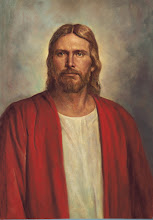There is a lot of misunderstanding and misinformation concerning the doctrine of baptism for the dead as taught by the Church of Jesus Christ of Latter Day Saints. If someones ancestor is baptized on behalf of a living person who is acting as their proxy, it does not follow that the deceased person becomes a Mormon, nor are they counted as members on the records of the church.
From LDS.org
"Jesus Christ taught that baptism is essential to the salvation of all who have lived on earth (see John 3:5). Many people, however, have died without being baptized. Others were baptized without proper authority. Because God is merciful, He has prepared a way for all people to receive the blessings of baptism. By performing proxy baptisms in behalf of those who have died, Church members offer these blessings to deceased ancestors. Individuals can then choose to accept or reject what has been done in their behalf."
"Some people have misunderstood that when baptisms for the dead are performed, deceased persons are baptized into the Church against their will. This is not the case. Each individual has agency, or the right to choose. The validity of a baptism for the dead depends on the deceased person accepting it and choosing to accept and follow the Savior while residing in the spirit world. The names of deceased persons are not added to the membership records of the Church."
Read further:
"The Redemption of the Dead"
Boyd K. Packer, Ensign, Nov. 1975, 97–99
We must not shirk our responsibility to provide gospel ordinances to both the living and the dead.
"The Spirit of Elijah"
Russell M. Nelson, Ensign, Nov. 1994, 84–87
Service in the temple together is a sublime activity for a family. It provides its own sustaining motivation and verification of the truth of this unique work.
"The Redemption of the Dead and the Testimony of Jesus"
D. Todd Christofferson, Liahona, Jan. 2001, 10–13; or Ensign, Nov. 2000, 9–12
By identifying our ancestors and performing for them the saving ordinances they could not themselves perform, we are testifying of the infinite reach of the Atonement of Jesus Christ.
"The Savior's Visit to the Spirit World"
Spencer J. Condie, Liahona, July 2003, 26–30; or Ensign, July 2003, 32–36
What Jesus did during the hours between His death and Resurrection provides the doctrinal foundation for building temples.
"Comparing LDS Beliefs with First-Century Christianity"
Daniel C. Peterson and Stephen D. Ricks, Ensign, Mar. 1988, 7–11
Is it true that because Latter-day Saints practice baptism for the dead, they are not Christian?
"I Have a Question"
Robert L. Millet, Ensign, Aug. 1987, 19–21
Was baptism for the dead a non-Christian practice in New Testament times, or was it a practice of the Church of Jesus Christ, as it is today?
"Proxy Baptism"
John A. Tvedtnes, Ensign, Feb. 1977, 86
In his epistle to the Corinthians, Paul cited the early Christian practice of proxy baptism for the dead as evidence of a future resurrection and judgment.
Thursday, December 18, 2008
Subscribe to:
Comments (Atom)

